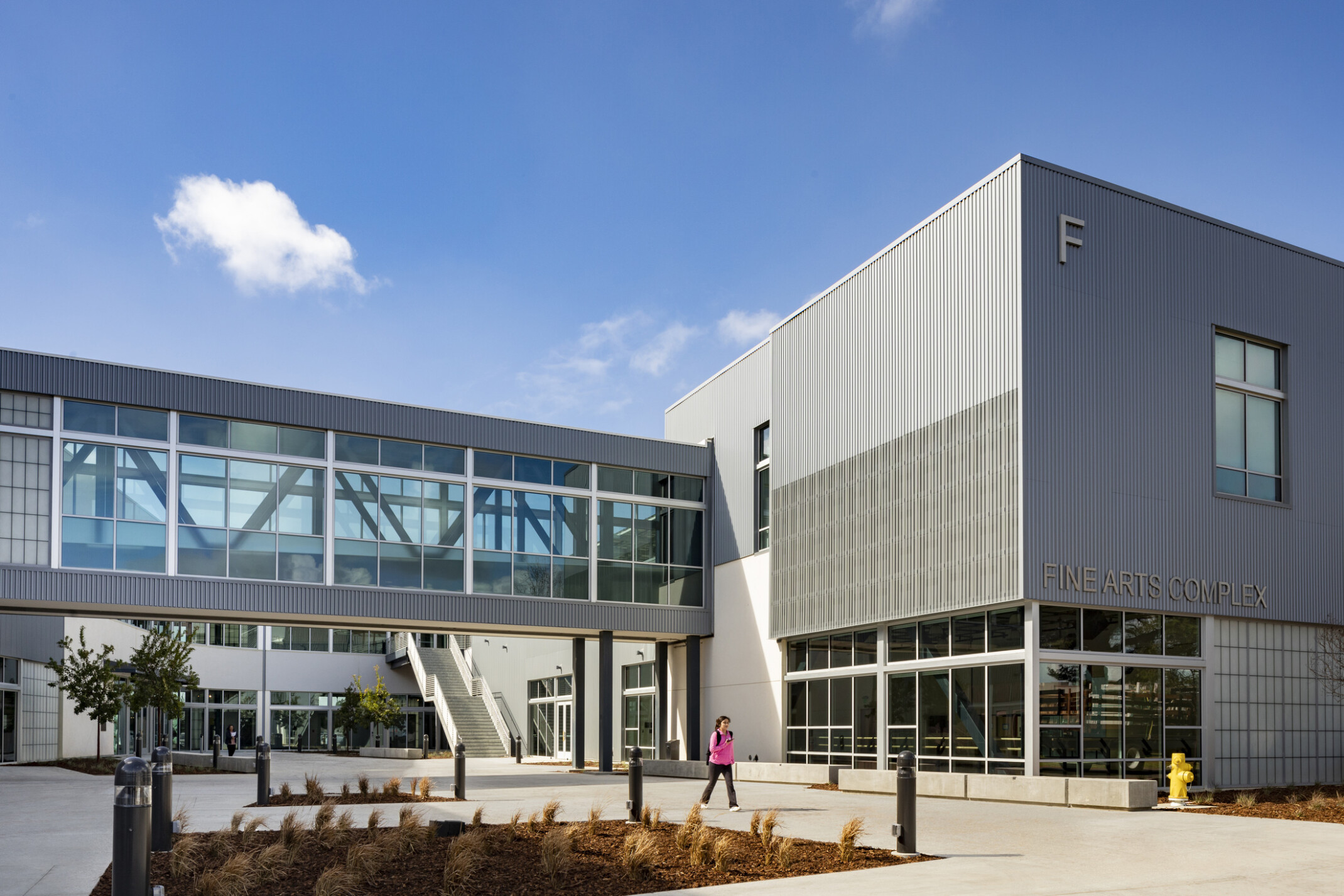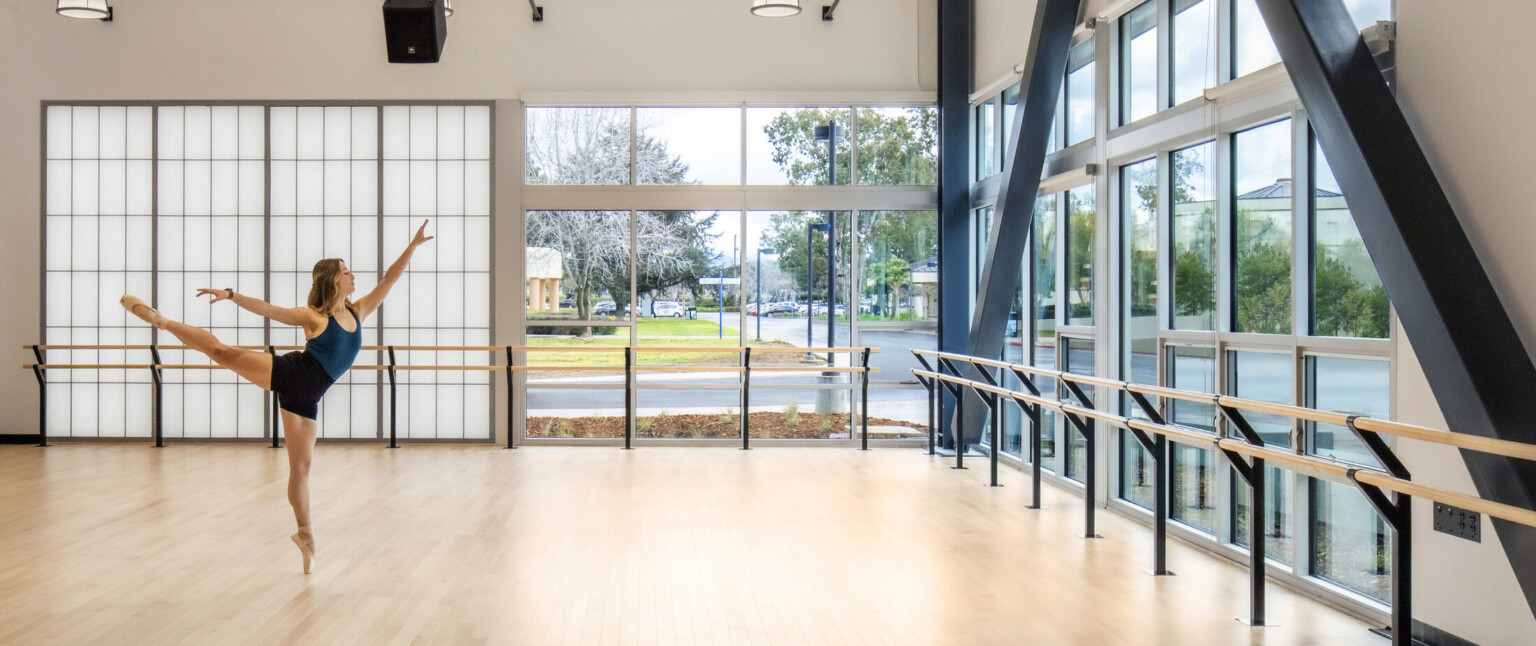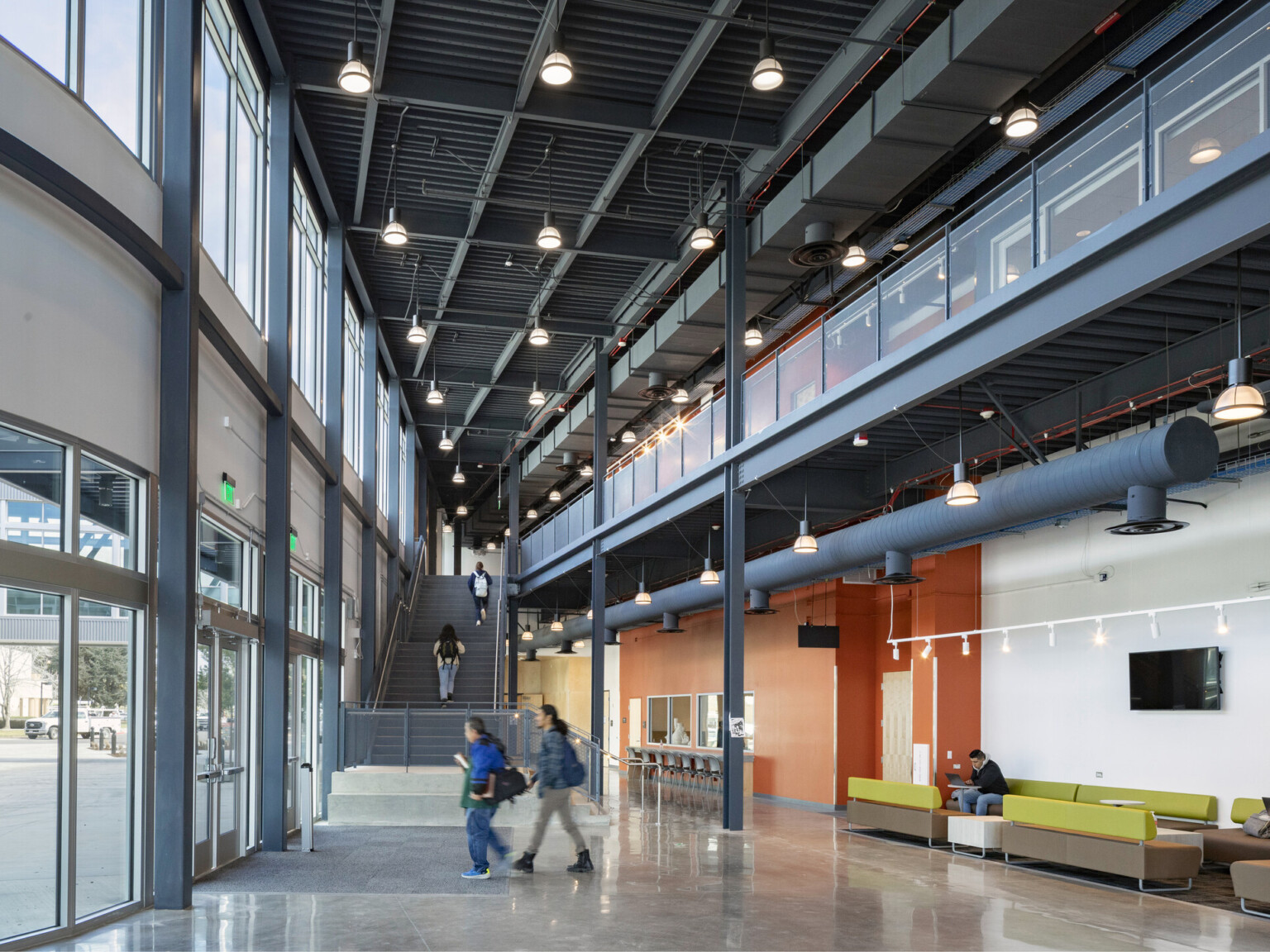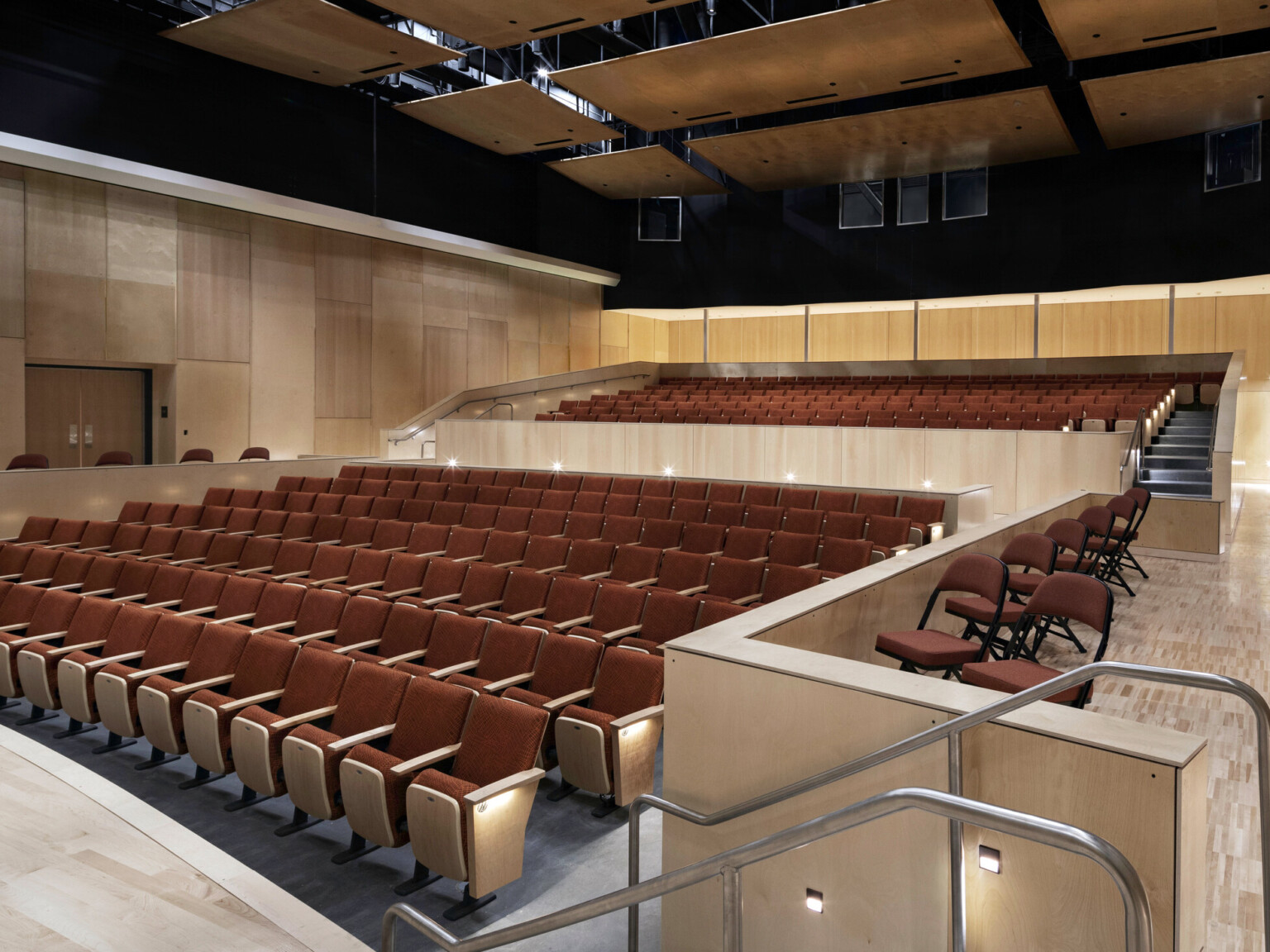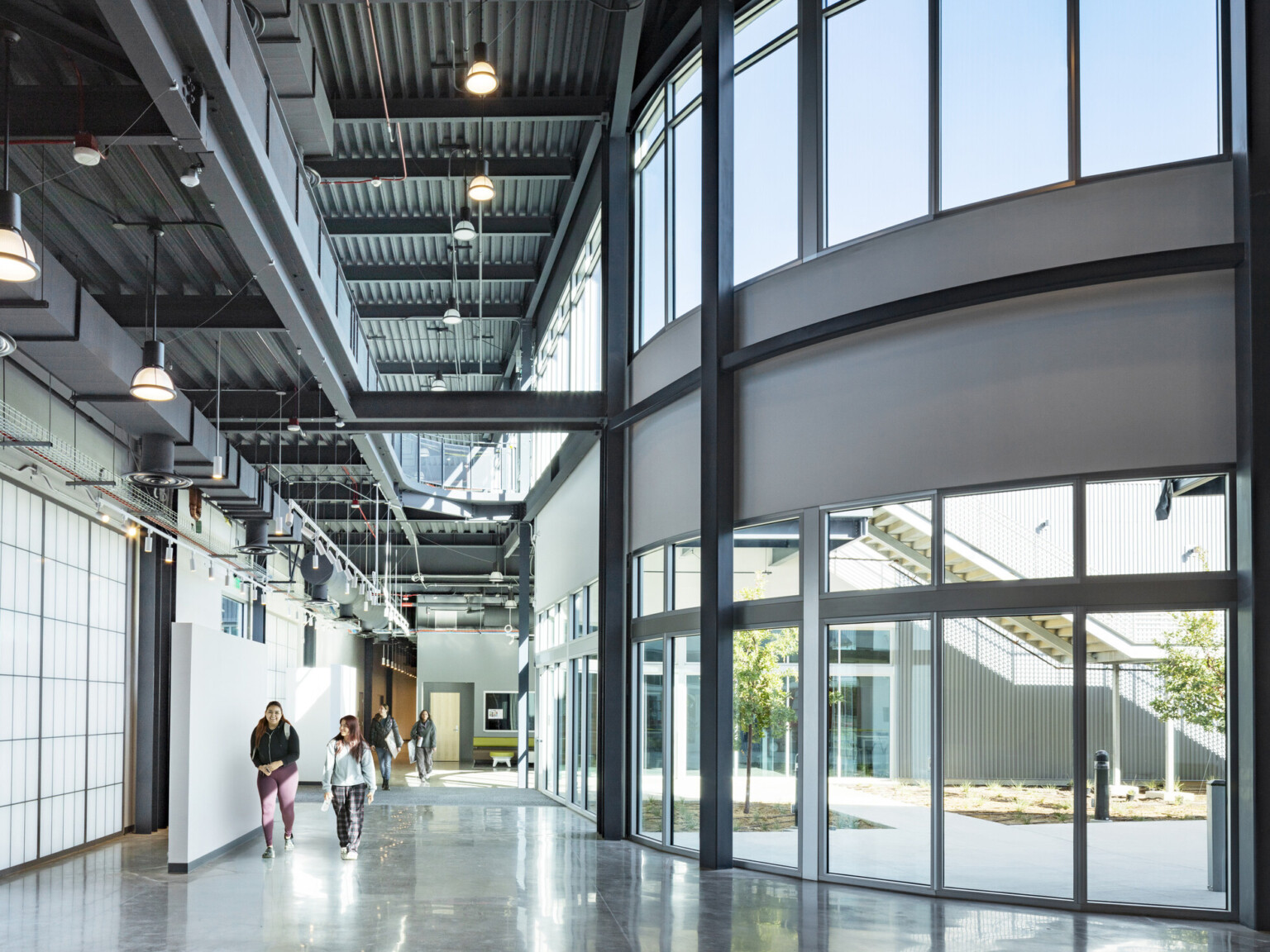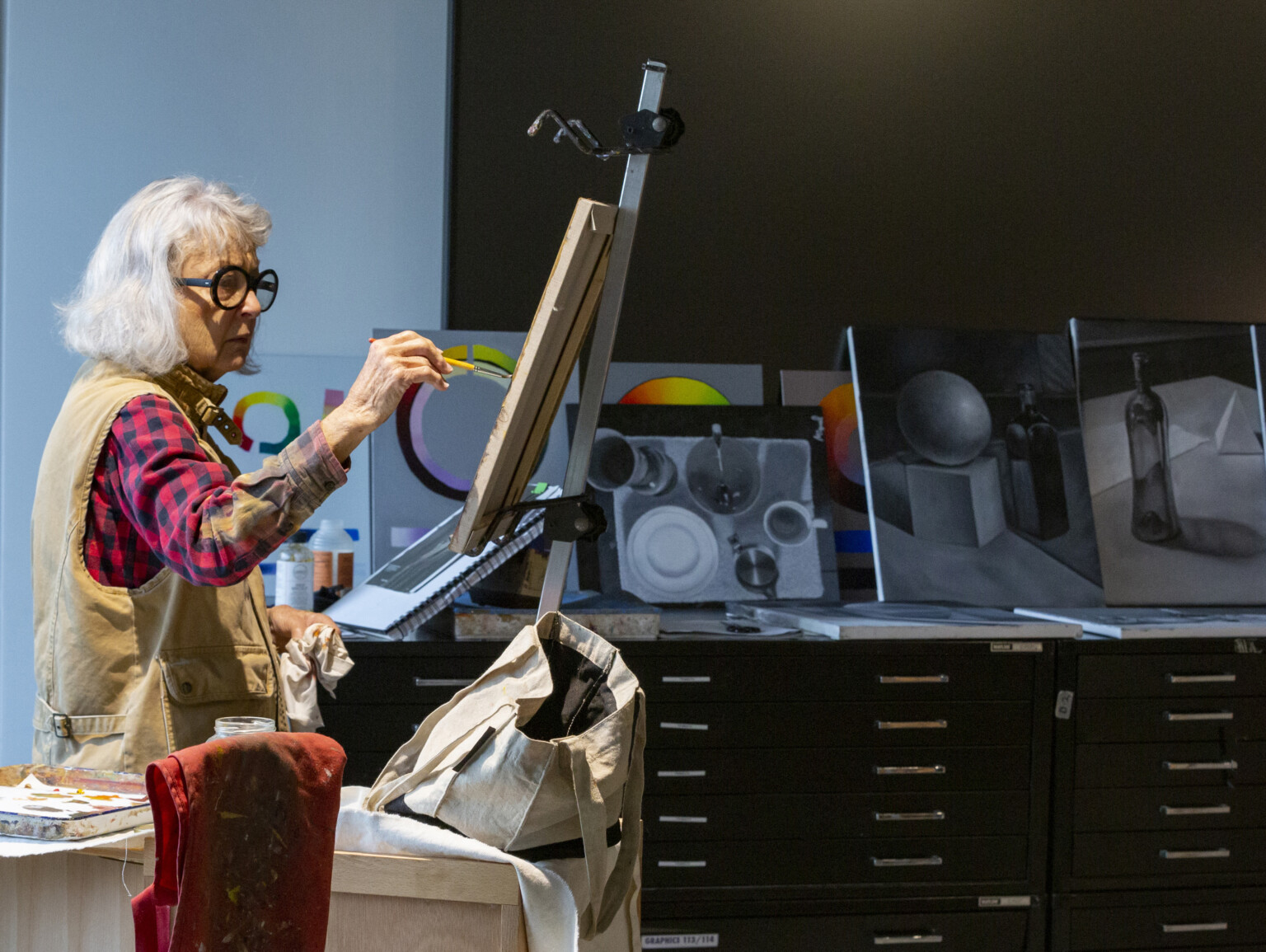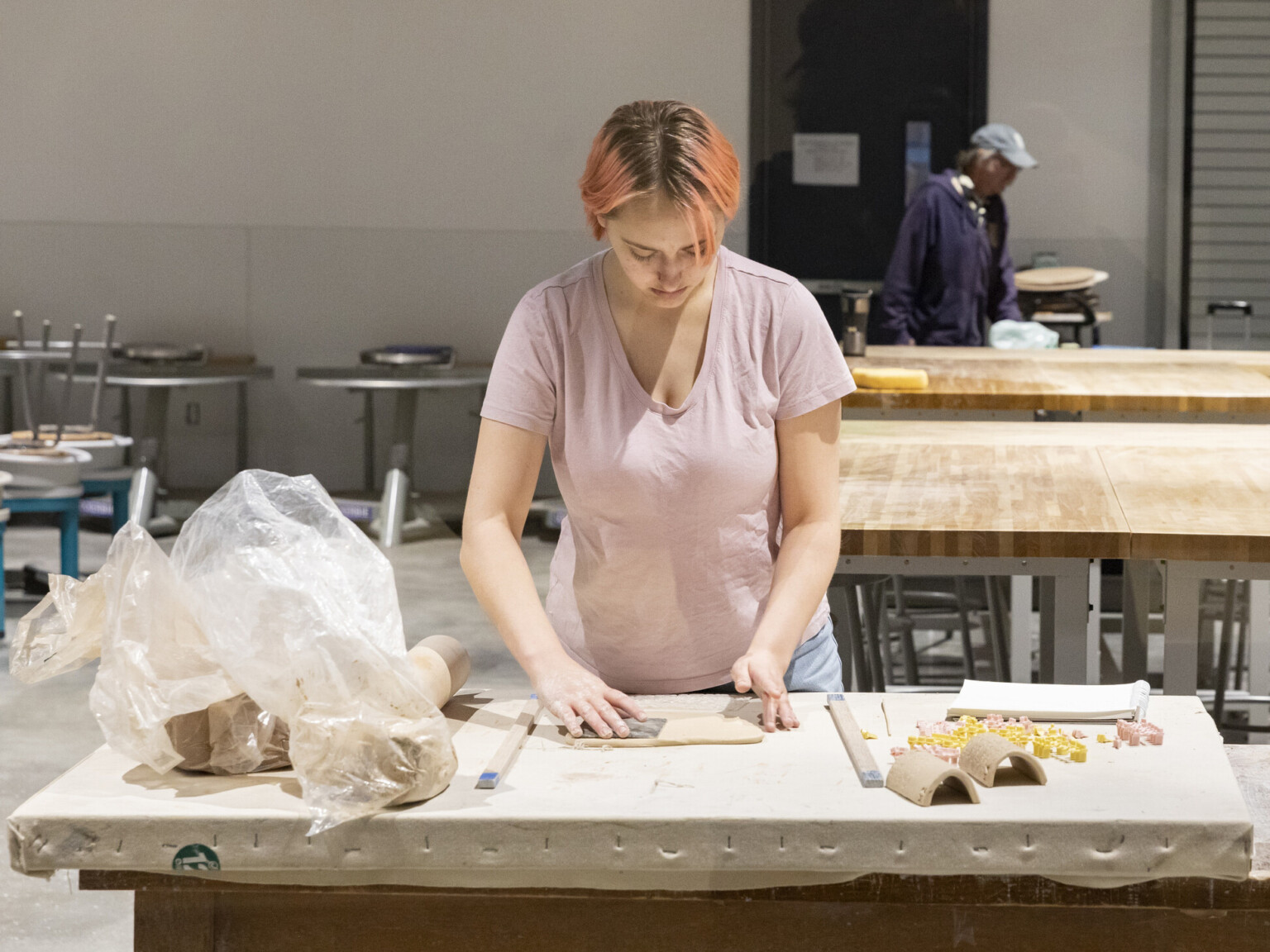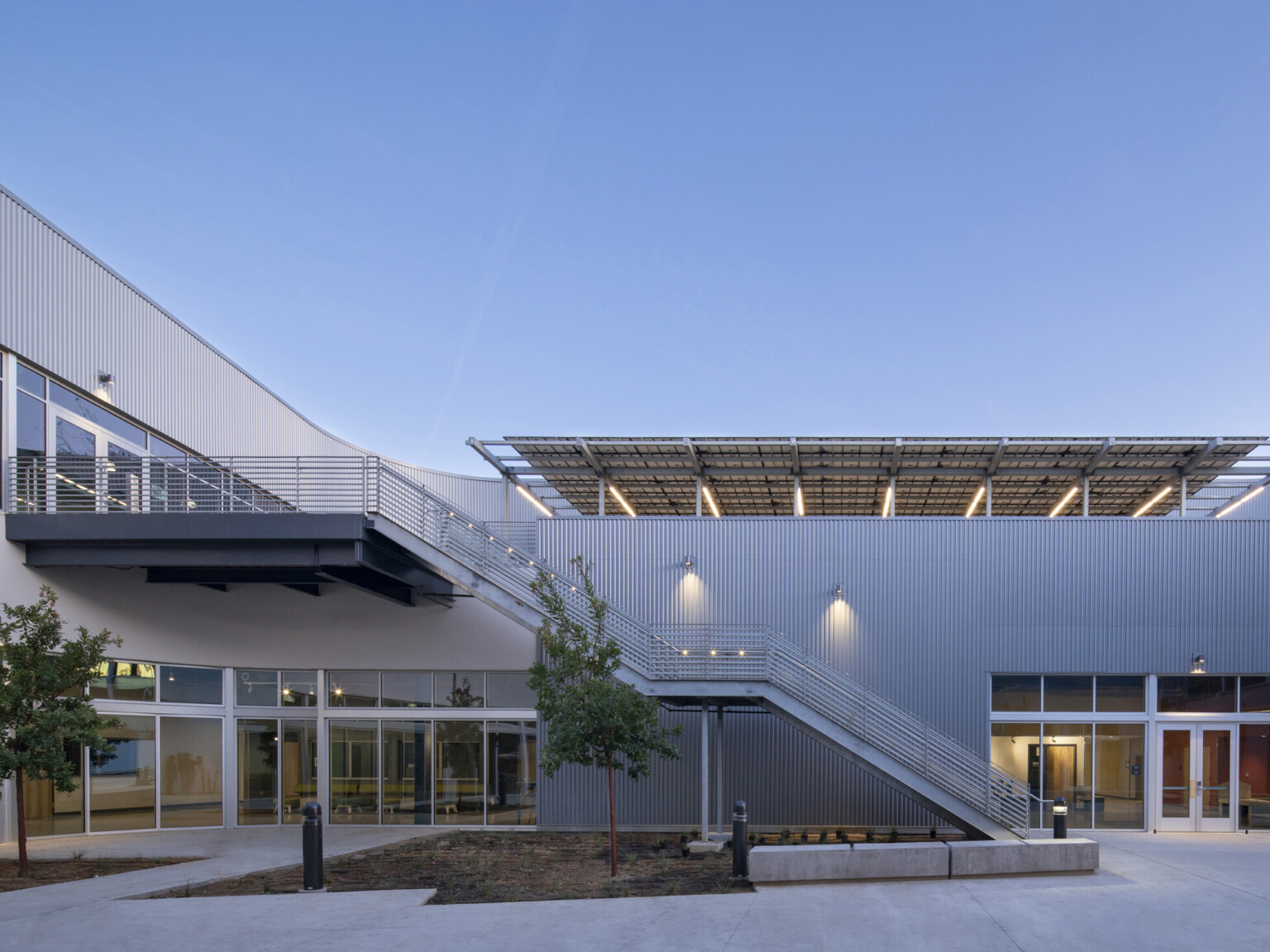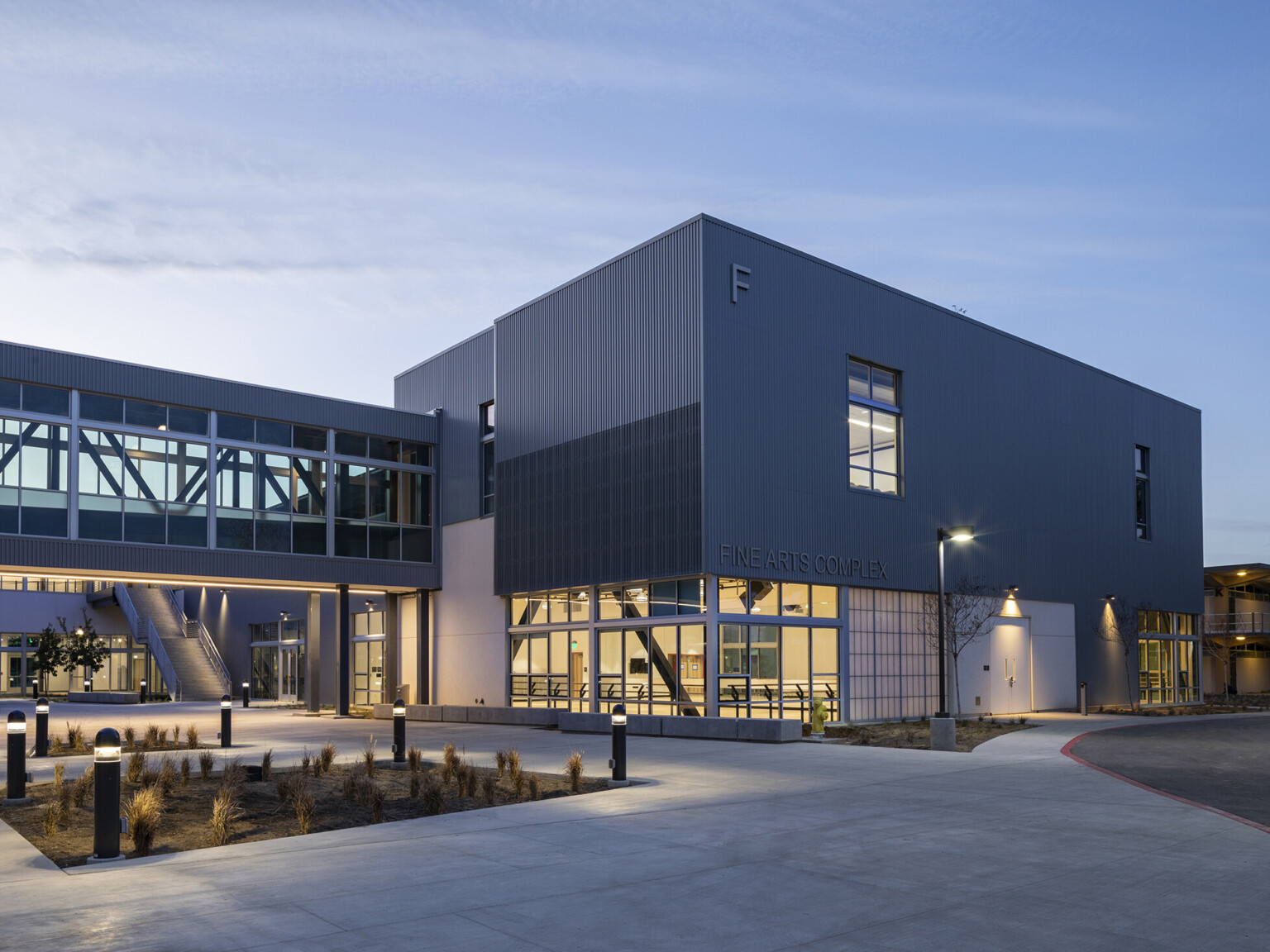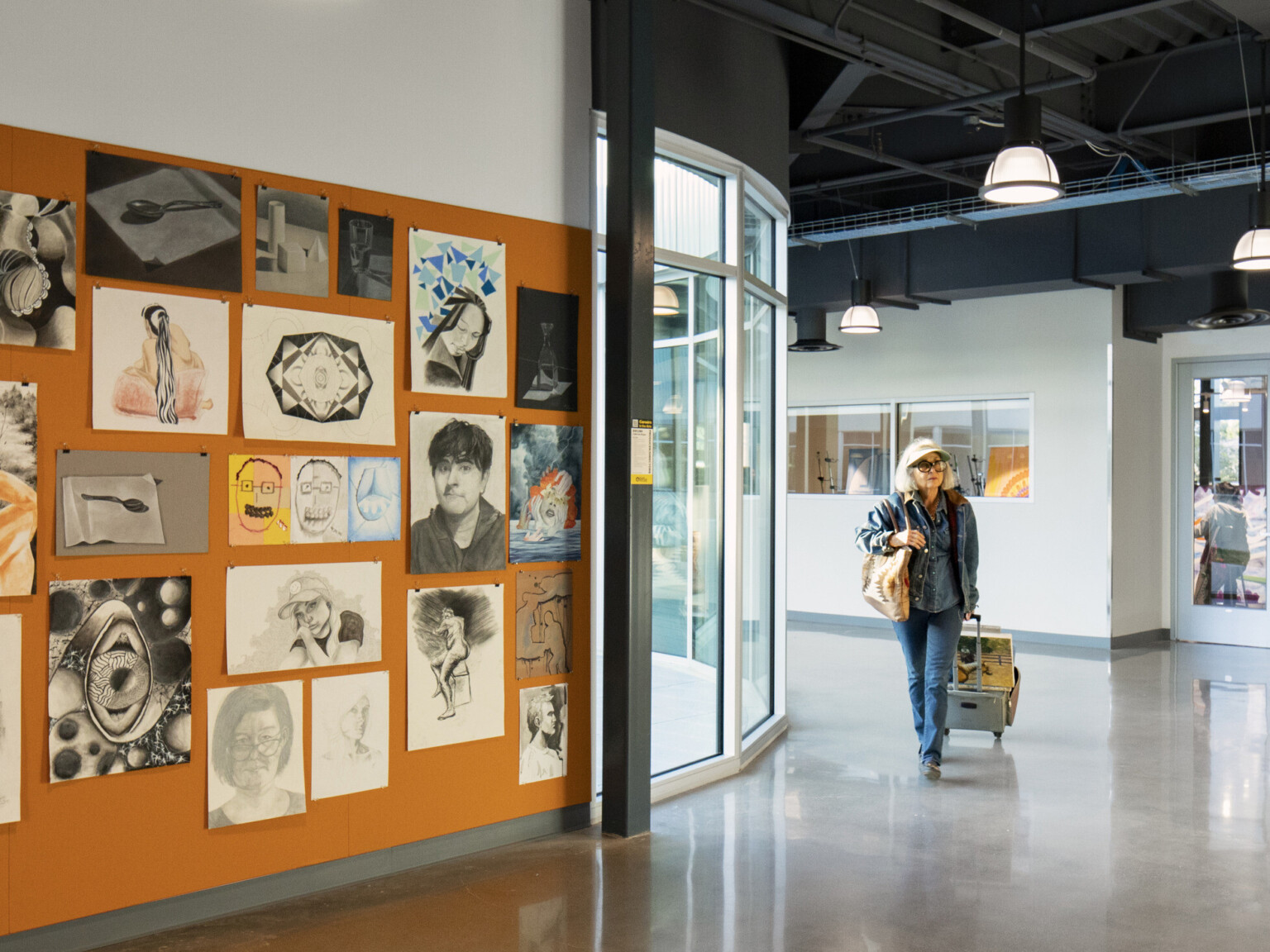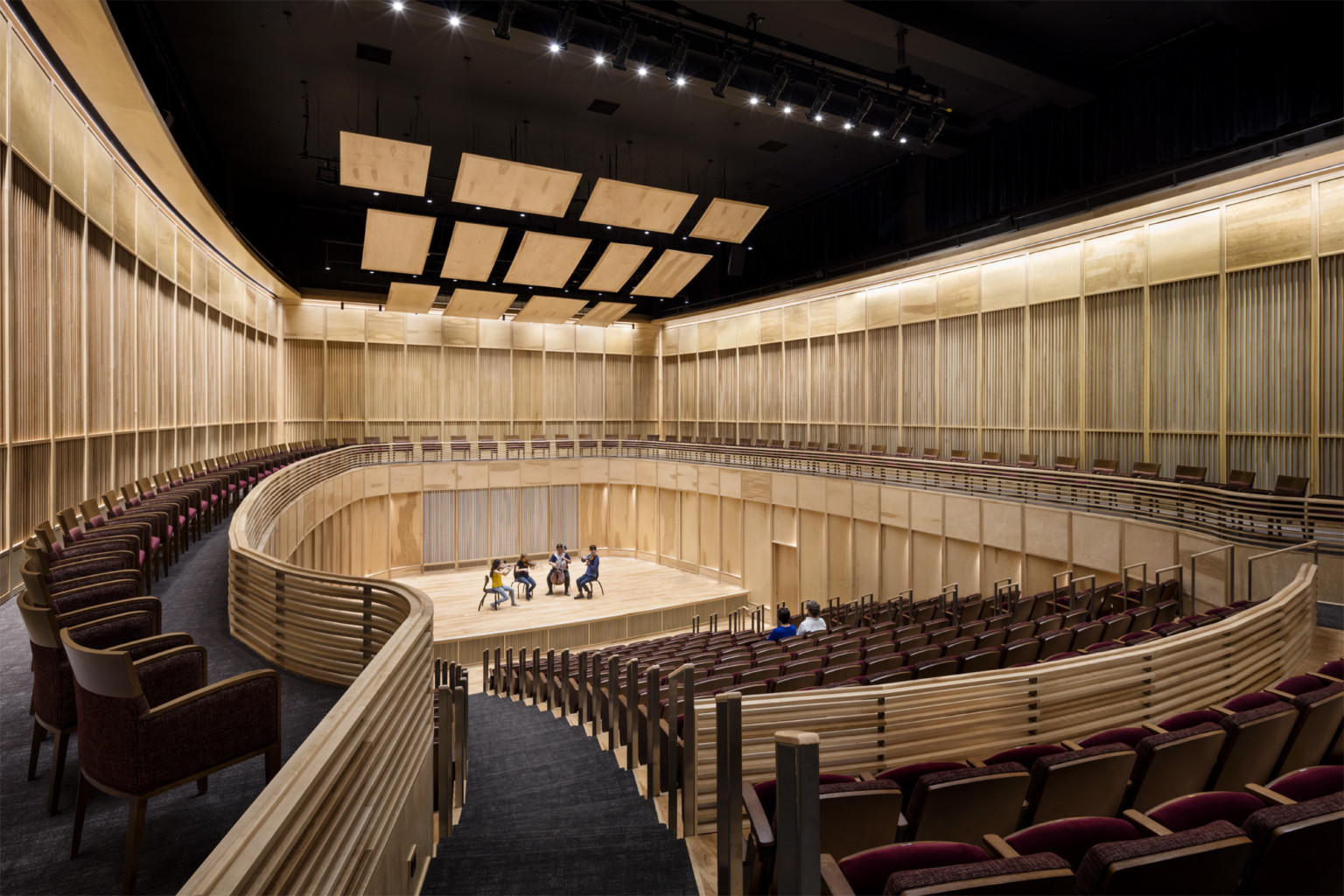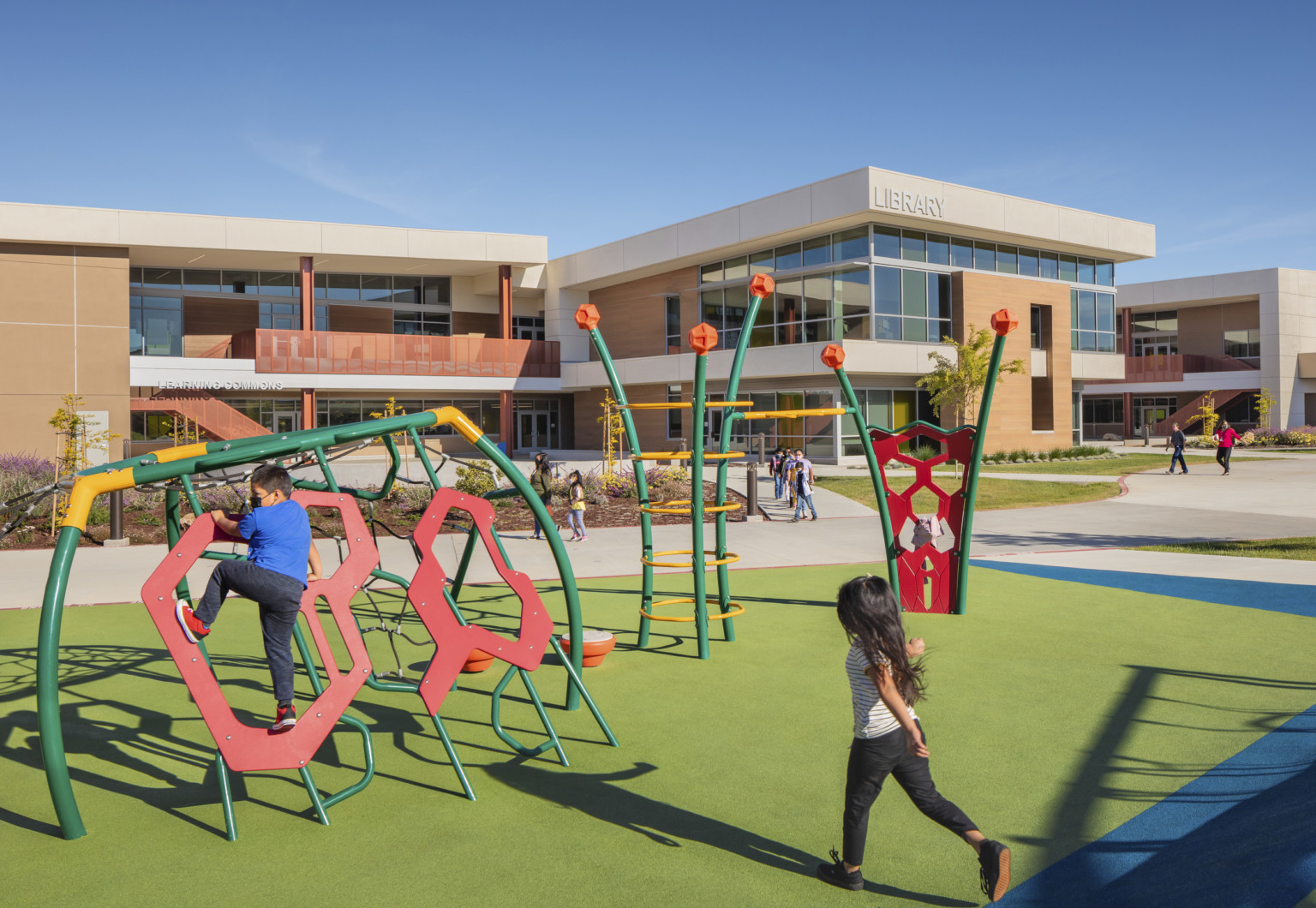The Fine Arts Building at Allan Hancock College unites fine arts departments including Art, Animation, Graphics, Multimedia, Photography, Dance, Music, and Film, all of which were previously dispersed across the campus. The building is designed to promote collaboration through exposing the arts to the campus, as well as between disciplines – drawing students and the community toward both studios and shared spaces. The vibrant presence of the arts fosters a sense of arrival to the campus and allows the new Fine Arts Building to serve as the dynamic hub of campus.
Our design was developed within a previously approved footprint, to meet the robust design ambitions of the second largest academic program within the College. This includes a 400-seat performance space and music lab, dance rehearsal rooms, ceramics studios, and choral rehearsal rooms, recording studios, painting studios, graphic design studios, film classroom and screening room, photography labs and digital media. Uniting these spaces around a two-story central gathering space and courtyard promotes inter-disciplinary collaboration. Each respective school’s spaces spill and overlap with one another, creating “intellectual loitering” zones, promoting cross discipline creativity and pollination. By utilizing passive sustainable strategies such as daylighting, natural ventilation, and indoor/outdoor connections, the building maximizes sustainability and well-being for its users.
The scope of work for this 89,000-SF building includes site work on the campus’s main mall, converting a secondary parking lot access road into the new Fine Arts Building and drop-off zone. This new, ground up, building was truly a collaborative project, utilizing specialists in our sustainability, acoustics, telecom/security, audiovisual, lighting, and theatrical teams. Spaces were designed with modest materials that cost-effectively meet stringent seismic requirements. The Fine Arts building is designed for LEED Silver v. 3 certification, with the mechanical system programmed to meet the demand of wood and clay shops, spray booths and paint studios, where indoor air quality considerations are paramount.
